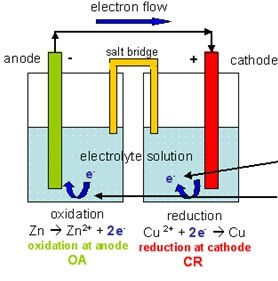

It is constant and doesn’t change regardless of the current flow.Īside from being used together, there are also applications where they are not together. The anode of capacitors and diodes is the side that you connect to the positive terminal since that’s where the electricity enters, and the negative terminal is the cathode because that is where the electricity leaves.īecause of the confusion with regards to the current flow and where the anode and cathode is, it is probably better to use the terms positive and negative terminals instead. The reversal is also very noticeable when you are dealing with components like diodes and capacitors since these components absorb electricity unlike batteries. In this case, the roles are reversed, and the positive terminal becomes the anode and the negative terminal is the cathode. But when the battery is being charged, the electricity flows into the positive terminal instead of out of it. In this case, the positive terminal is the cathode, and the negative terminal is the anode.

If we look at a battery connected to a load, like a bulb for example, the electricity flows from the positive terminal to the negtive terminal. In contrast, the cathode is the electrode where the electricity flows out of. The anode, by definition, is the electrode where electricity flows into. However, there are certain scenarios where this is not true. Most of the time there is no problem with it as the definition would often match the practice. Anode and cathode are two terms that are often used interchangeably with positive and negative in batteries.


 0 kommentar(er)
0 kommentar(er)
